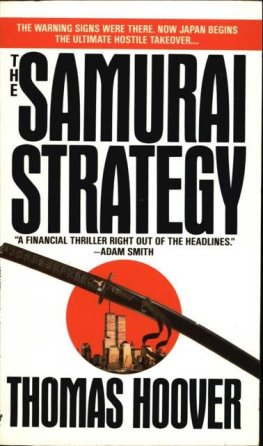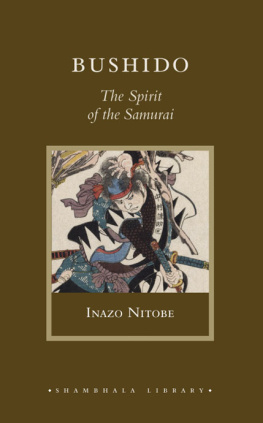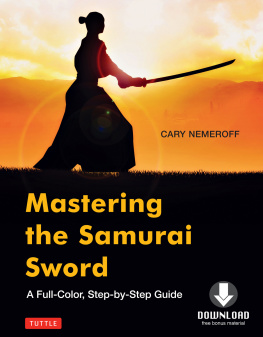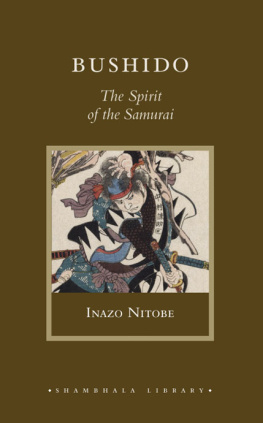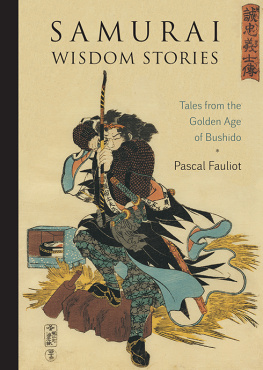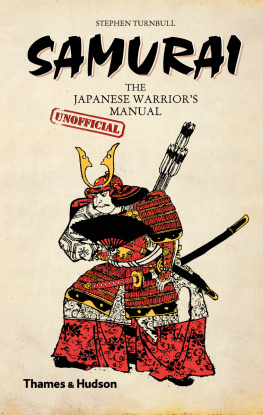Kohshyu Yoshida - The Samurai Sword: Spirit, Strategy, Techniques
Here you can read online Kohshyu Yoshida - The Samurai Sword: Spirit, Strategy, Techniques full text of the book (entire story) in english for free. Download pdf and epub, get meaning, cover and reviews about this ebook. year: 2010, publisher: Tuttle Publishing, genre: Religion. Description of the work, (preface) as well as reviews are available. Best literature library LitArk.com created for fans of good reading and offers a wide selection of genres:
Romance novel
Science fiction
Adventure
Detective
Science
History
Home and family
Prose
Art
Politics
Computer
Non-fiction
Religion
Business
Children
Humor
Choose a favorite category and find really read worthwhile books. Enjoy immersion in the world of imagination, feel the emotions of the characters or learn something new for yourself, make an fascinating discovery.
- Book:The Samurai Sword: Spirit, Strategy, Techniques
- Author:
- Publisher:Tuttle Publishing
- Genre:
- Year:2010
- Rating:5 / 5
- Favourites:Add to favourites
- Your mark:
- 100
- 1
- 2
- 3
- 4
- 5
The Samurai Sword: Spirit, Strategy, Techniques: summary, description and annotation
We offer to read an annotation, description, summary or preface (depends on what the author of the book "The Samurai Sword: Spirit, Strategy, Techniques" wrote himself). If you haven't found the necessary information about the book — write in the comments, we will try to find it.
The Samurai Sword: Spirit, Strategy, Techniques — read online for free the complete book (whole text) full work
Below is the text of the book, divided by pages. System saving the place of the last page read, allows you to conveniently read the book "The Samurai Sword: Spirit, Strategy, Techniques" online for free, without having to search again every time where you left off. Put a bookmark, and you can go to the page where you finished reading at any time.
Font size:
Interval:
Bookmark:
ACKNOWLEDGMENTS
I would like to express my gratitude to those people who have always believed in me and supported me so faithfully in many ways. Scot Lewis, you are a great editor, my Taekwondo teacher, and more than anything, you are a man with a true good heart. You really know what patience is. Pam Lewis, our personal trainer and Scots wife, thank you for your strong support of Scot and myself.
Kenji Hashimoto, I could not have survived and completed most of my works without your help. You are truly a great artist and true friend with pure loyalty.
Ohno Sasaki & Daniel Tam-Lung. You are both true mentors and teachers of art and life. You are two highly spiritual people. Ohno Sasaki is a direct descendant of legendary samurai Moritsuna Sasaki, and I feel very honored to know you as I am also a descendant of a samurai. I am constantly learning about how humans should live from both of you. Thank you so much for being in my life. I am truly honored.

Thank you very much and I wish you much happiness.
KOHSHYU YOSHIDA

About the Author

KOHSHYU YOSHIDA was born and raised in Chiba, Japan. That period in Japan was what Kohshyu calls hero trendy. By hero trendy, he refers to the proliferation of entertainment focused on showing heroes who had a good heart and compassion. He believes that entertainment is a powerful tool that can be used to pass along positive ideas and values. He was greatly influenced by that entertainment trend. The positive attitudes toward the future that the Japanese had at that time were passed along to their children. But now it seems we rarely see those heroes or their values. What he sees in movies and on TV are drugs and killing with no emotional conflict.
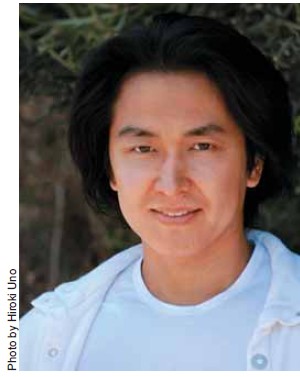
At age ten, Kohshyu decided to be an action hero in filmsa positive role model to inspire others. Since then he has focused on training himself in sports and martial arts. At age fourteen, he took a test to enter Japans top action movie star school and was accepted as the youngest of one hundred students. He has worked in the entertainment industry in Japan and the United States.
Kohshyu has always dedicated himself to his goal of inspiring and touching other peoples lives. That motivation has taken him to a greater level as an entertainer, martial artist, and human being. He starred as the Red Ranger on the popular childrens TV show, Mighty Morphin Power Rangers . At the same time he choreographed the very successful Power Rangers worldwide live tour that started at Universal Studios in 1994. In addition, he has made many live appearances for the Make-A-Wish Foundation, giving hope and courage to those children who fight to survive disease and other difficulties.
Kohshyu has studied martial arts from all over the world and now teaches martial arts in Los Angeles. As a teacher, his primary goal is to mold his students hearts honing their physical abilities is a secondary concern.
Kohshyus film work includes Blade , starring Wesley Snipes. More recently, he appeared in The Last Samurai , starring Tom Cruise. The Last Samurai was a particularly gratifying experience for him as he is a descendant of samurai warriors, and his family heritage has roots in samurai lineage. His ancestor was - Zen Kurou Atsu Toshi (Heikes Samurai) whose name means Virtue and Ninth Man. AtsuToshi means a man who has a kind heart and magnificent talent and knowledge to help volunteer action around the world. Atsu Toshi was the founder of the familys village, around 800 years ago, and Kohshyus relatives still live there today. His family-crest, established 900 years ago, shows the hawk-feather protecting the butterfly. The butterfly is the symbol of a royal family. The hawk feather is the symbol of a warrior in Japanese history, and also means God-crest in southern Japan. A legendary story from ancient times tells of a samurai lord who dreamed that he received a God-horse and hawk-feather crest from the universe. That is why a shrine used the feather as its symbol.
In addition, Kohshyus great-great-grandfather, Wakaji (meaning Youth and Healing) was a remarkable ronin in 19th century Japan, which is the same time period as that in the film The Last Samurai. Wakaji was famous for inventing a sword hidden inside a walking stick, which he used to protect and save many peoples lives.
Kohshyu was named after the historical 19th-century last samurai, Takamori Saigou himself. Takamori was the Japanese hero on whose life the film was based.
In its December 1, 2003, edition, the Los Angeles Times published a feature story on Kohshyu. Other American and Japanese magazines, newspapers, and television programs have also done stories on Kohshyu based on his biography and heritage.
Kohshyu believes that if the samurai heart is re-established in todays world, it will be of benefit to all. If we can become better individuals, that will create a better world. He calls this discipline the Democratic Samurai .
A lack of mental discipline often defeats many people. Kohshyu wishes to share the ancient samurai school of thought to condition himself and others to make stronger minds.
Kohshyu is committed to working in both Light and Shadow. Light represents real life. And Shadow represents the illusion that is entertainment. Despite the fantasy elements of entertainment, Kohshyu believes that it can pass along positive messages for our benefit.
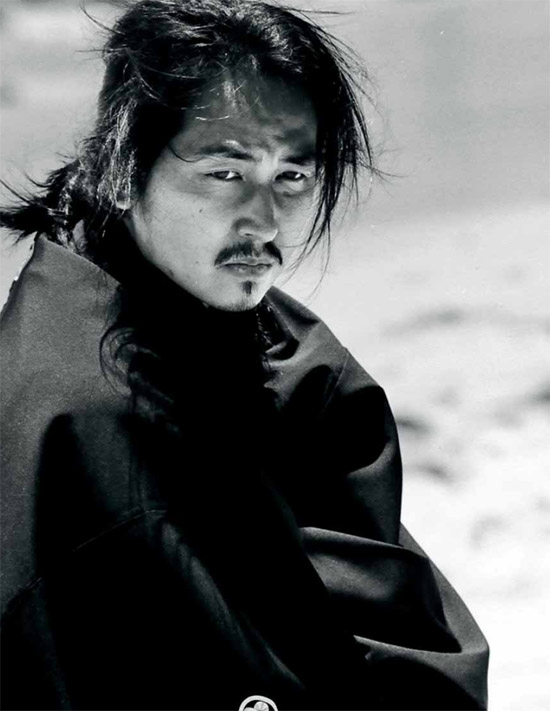
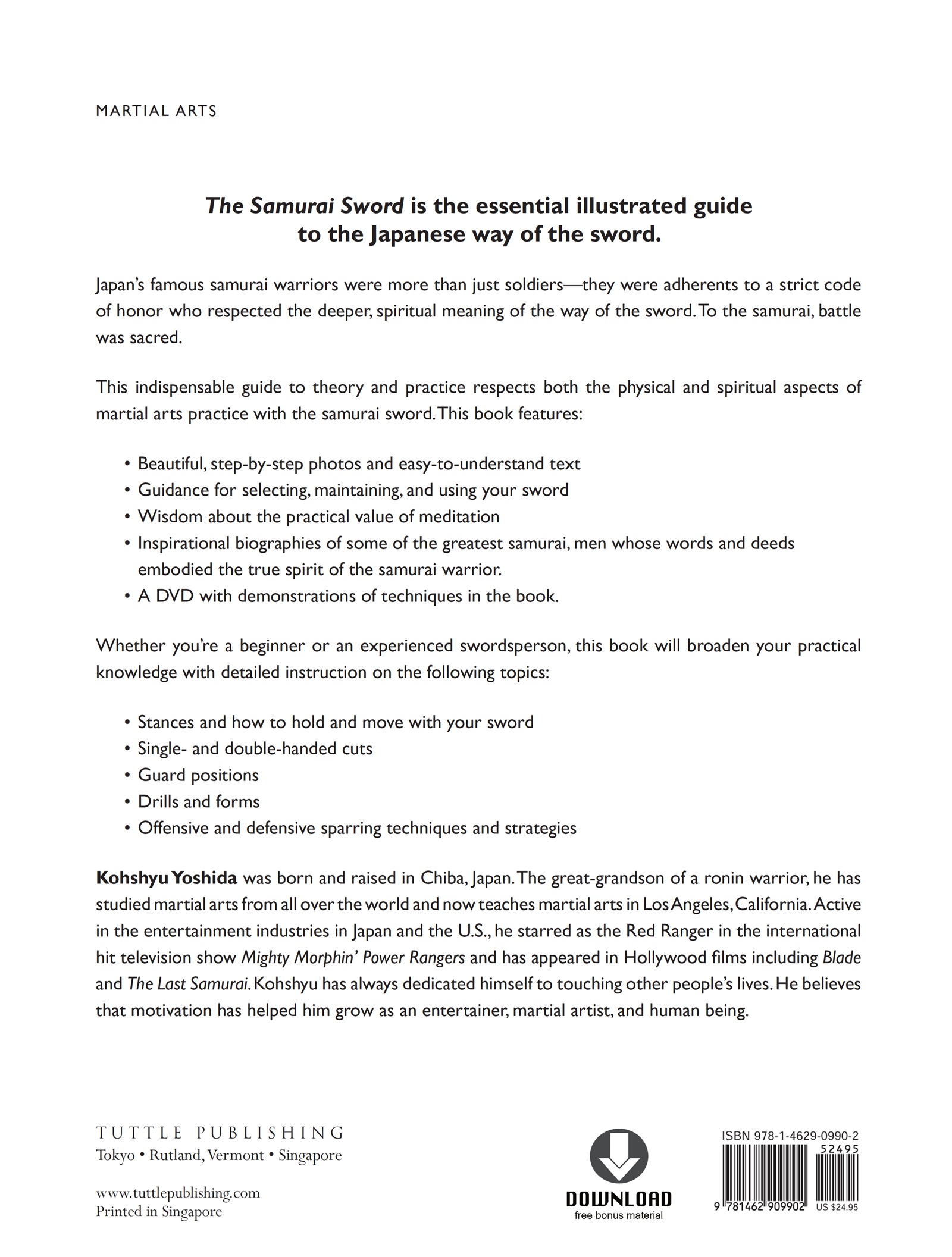

CHAPTER 1
THE WAY OF THE SAMURAI
S amurai were soldiers hired to protect their lord, their land and its people. In the beginning, they were simply soldiers, but as time passed and family heritages were built, the samurai became stronger warriors with the philosophy of the universe in their minds and hearts. They respected their enemies as much as they respected themselves, so when a samurai warrior killed an enemy, he did so very honorably. That way he would receive an honorable death, too. The battle was sacred to them.
In the Chinese character alphabet the word samurai is a combination of Person and Temple . Zen, or meditation, which is famous in the world today, was helpful to the samurai in ancient times to maintain inner peace.
While some samurai were purely militaristic, others were spiritual warriors who tried to understand the world and its contradictions. These warriors were honored to protect people rather than kill them. Their sword was a spiritual symbol of commitment, a legacy, and a receptacle for their soul. Their practice of calligraphy and poetry were their way of sharing their internal space with others.

Font size:
Interval:
Bookmark:
Similar books «The Samurai Sword: Spirit, Strategy, Techniques»
Look at similar books to The Samurai Sword: Spirit, Strategy, Techniques. We have selected literature similar in name and meaning in the hope of providing readers with more options to find new, interesting, not yet read works.
Discussion, reviews of the book The Samurai Sword: Spirit, Strategy, Techniques and just readers' own opinions. Leave your comments, write what you think about the work, its meaning or the main characters. Specify what exactly you liked and what you didn't like, and why you think so.


